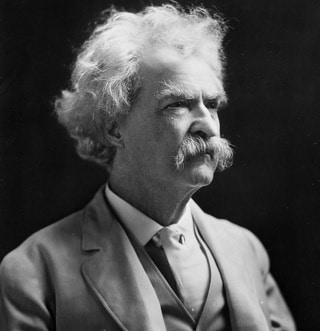
Four Great Autobiographies Written with the Help of a Ghostwriter
FOUR GREAT AUTOBIOGRAPHIES WRITTEN WITH THE HELP OF A GHOSTWRITER
“All of our experiences fuse into our personality. Everything that ever happened to us is an ingredient.” — Malcolm X
There is a common misconception about ghostwriting. In general, some people believe ghostwriting is one person taking credit for someone else’s work.
In reality, ghostwriting consists of an individual enlisting the help of a professional writer to aid them in finding their true voice.
For many folks, writing does not come easily. Therefore, the help of a professional writer allows them to get their message out to the world. The difference lies in the writer not getting their name on the book.
When it comes to autobiographies, ghostwriters make many of them possible. Ghostwriters help individuals write their life story, especially when they lack the time, skill, and experience to write for themselves.
In this article, we will explore four great autobiographies that were (surprisingly!) written with the help of a ghostwriter.
Four Great Autobiographies Written with the Help of a Ghostwriter
1. An American Life by Ronald Reagan
The world remembers Ronald Reagan as the 40th president of the United States. He is one of America’s most renowned and beloved presidents. In particular, his origins as an actor and entertainer diverged from a traditional political career.

After successfully running for governor of California in 1966, Regan held this office from 1967 to 1975.
Regan first ran for president in 1975. However, his unsuccessful bid did not stop him from running once again in 1980. This time, he succeeded in defeating incumbent Jimmy Carter.
Reagan became president in 1981 and left office in 1989 after serving two terms.
His presidency featured several historic events, including an assassination attempt. Additionally, Reagan was outspoken on several social, political, and economic issues. His beliefs cemented his position in American politics.
After leaving office, Reagan published his autobiography titled An American Life in 1990. The book received positive reviews. It reached the eighth spot on the New York Times Best Seller list. Nevertheless, the most interesting fact about the book was its author.
Contrary to popular belief, Reagan did not write the book himself. Instead, former New York Times journalist Robert Lindsey was the author behind the cover. Though he did not receive credit for the book, it is a well-known fact that Lindsey was the book’s true writer.
A 1990 review by The New York Times’s Maureen Dowd offers the following opinion on the book’s prose:
“Reading this book is like listening to the stories of a kindly uncle: some are interesting, some are skewed, most are familiar. Capturing Mr. Reagan’s voice perfectly, Mr. Lindsey has strung together anecdotes, speeches, ideology, and accounts of the high points and low points of the Reagan Presidency — Lebanon, Grenada, tax reform, arms control, the Iran-contra affair, the assassination attempt, the summits with Mikhail Gorbachev, the romance with his wife, Nancy. Great care is taken to maintain the courtly Reagan image, even to blanking out the middle letters of such mild swearwords in his diary entries as ‘hell’ and ‘damn.’”
This evaluation of Robert Lindsey’s prose shows the great care that professional ghostwriters take in ensuring they capture their client’s thoughts and feelings.
Undoubtedly, great ghostwriters can take a stale collection of facts and transform them into literary artworks.
Indeed, “An American Life” cultivates Ronald Reagan’s public persona without descending into flattery. This book is far from a puff piece. While critics claim this book portrays Reagan in a favorable light, it offers valuable insights into the life of a prominent historical figure.
2. The Age of Turbulence by Alan Greenspan
Alan Greenspan’s lengthy career in American politics is renowned for his time as Chairman of the Federal Reserve. Specifically, Greenspan chaired the Federal Reserve from 1987 to 2006.
During his tenure, he dealt with the 1987 stock market crash, the 2000 Dot Com Bubble, and numerous economic and political issues.

Following his retirement, Greenspan published his autobiography, The Age of Turbulence, in 2007. The book debuted at number one on the New York Times Best Seller list. In addition, Greenspan purportedly received an $8 million advance from Penguin Press.
It is worth noting that Greenspan is no stranger to writing. There are numerous books to his credit. In particular, he published three books before his autobiography. Nevertheless, “The Age of Turbulence” came out in 2007 officially under Greenspan’s name, with co-author Peter Petre receiving acknowledgment for his contributions.
Petre is a former executive editor at Fortune magazine. He lists his famous collaborations on his website, including this one with Alan Greenspan.
Technically, this was not a ghostwritten book, as Peter Petre did receive recognition for his contributions. However, his name does not appear on the book cover. Hence, this book was truly a ghostwritten endeavor.
According to Penguin, the book’s publisher, “The Age of Turbulence will stand as Alan Greenspan’s personal and intellectual legacy.” Indeed, the publisher recognizes this as Greenspan’s work while omitting his ghostwriter’s contributions.
According to Greenspan, he began writing his autobiography the day he left the Federal Reserve in January 2006. In particular, he told USA Today in 2007, “I was trying to hold the whole book in my head at the same time, and I knew if I took two weeks off, it would just spill away, and I’d have to pick up again.”
It seems evident that Greenspan had plenty of ideas rumbling around in his mind. Hence, the need for a ghostwriter/co-author makes sense. Specifically, Greenspan’s publisher pushed him to publish the book on short notice. Consequently, the need for a ghostwriter’s help became evident.
Ultimately, “The Age of Turbulence” received mixed reviews. However, Benjamin Friedman of the New York Review of Books called it “clearly written and easy to read and understand.” As such, it is apparent that this book got its message across.
For his part, Petre offers this insight into his collaboration with Greenspan:
“To tell his story, we developed an unorthodox structure for the book. The first half is a carefully woven, drily humorous memoir in which the reader joins the intellectual journey that brought Greenspan from a lower middle-class boyhood in New York through a discipleship with Ayn Rand and into the strange priesthood of central banking. The second half of the book is a fascinating tour d’horizon as Greenspan explores the world’s economies and lays out bold precepts and concrete predictions about decades to come.”
Undoubtedly, this collaboration proved successful. Greenspan met his deadlines, while the book received mostly positive press across the board.
3. The Autobiography of Ulysses S. Grant by Ulysses S. Grant
History recalls Ulysses S. Grant as the 18th president of the United States. He is also memorable for his role in the U.S. Civil War. He was a general fighting for the North, and ultimately, to keep the United States together. His military exploits earned him admiration and fame throughout the country. This recognition catapulted him to his election in 1868. He took office in 1869 and completed his second term in 1877. Among his distinctions was the nickname “Uncle Sam.”
The National Constitution Center’s 10 Fascinating Facts about President Ulysses Grant states in #9 that President Grant was a “gifted writer.” On the surface, there is reason to believe this is true. Grant’s autobiography, “The Autobiography of General Ulysses S. Grant: Memoirs of the Civil War,” is notable for its collection of clever prose and abundant historical information. Scholars all agree that this work is one of the most valuable pieces of military history. However, little is overt about the obscure collaboration between President Grant and Mark Twain.
Surprisingly, President Grant was a longtime friend of American literary giant Mark Twain. According to the official narrative, Twain encouraged his friend to write his memoirs following his retirement from office. Unfortunately, Grant was reluctant to write his memoirs, despite numerous offers. In particular, Grant refused to publish anything since he was “no writer.”
Ultimately, Grant begrudgingly accepted, as he found himself in ill health and financially distressed. Initially, Grant wrote a series of articles for Century Magazine. The publishers asked Grant to expand the series of articles he had written into a full-blown memoir. However, his frail health and rapidly advancing cancer made it quite difficult for him to write. Twain then decided to help his longtime friend.

The official story states that Twain devised a witty marketing scheme for Grant’s book. However, Grant died before the book reached publication. The original 350,000 print run sold out within weeks.
Nevertheless, Grant’s failing health made it extremely unlikely that he would have completed the book without support.
As such, Twain helped his dear friend finish his memoirs. However, Twain would never admit to this. After all, doing so would have damaged his friend’s legacy.
Thus, while it is clear that Twain helped Grant cement his legacy, Twain would never take credit for his friend’s stories.
4. 7 Habits of Highly Effective People by Stephen R. Covey
“The 7 Habits of Highly Effective People” is one of the most successful books in history. First published in 1989, the book went on to sell over 25 million copies worldwide. In addition, it is one of the most influential self-help books, helping launch the self-help book genre through the roof.
There is no denying the book’s valuable insights and contributions to helping people improve their overall lives and achieve goals. In 2011, Time included “The 7 Habits” in its list of the 25 Most Influential Management Books.
Stephen R. Covey is a world-famous management guru. Sadly, he passed away in 2012, but not without leaving quite a legacy. His legacy includes dozens of books ranging from management to spirituality. “The 7 Habits” is technically more a memoir than an autobiography. In this volume, Covey shared the vision that led him to become a highly successful person himself.
Despite its success for Covey, “The 7 Habits” was the result of ghostwriter intervention. Ken Shelton, founder, CEO, and editor-in-chief of the firm Executive Excellence has received credit for his role in “The 7 Habits” as a writer/editor. This fact should not be surprising at all.
Most renowned authors employ ghostwriters, co-authors, and editors to keep up with publishing demand. After all, for many writers it is challenging to produce more than one book per year. Even prolific writers such as legend Stephen King have their limitations. King reportedly has claimed that he writes about 2,000 words per day.
It is worth noting that Stephen King is the exception rather than the norm. Most authors, in particular novelists, often write at a glacial speed.
As for nonfiction, authors generally require time to conduct research and go through numerous revisions to ensure accuracy. As a result, publishing multiple books a year necessitates the help of additional writers.
Does this make ghostwriting unethical?
Hardly. “The 7 Habits” proves that authors are brands.
Consequently, they must strive to keep up with demand. Logically, this implies enlisting help whenever possible. Otherwise, authors would have to devote their entire time to writing and research. Even so, they may be unable to keep up with their publishers’ demands. Fortunately, there are writers such as Ken Shelton who are there to keep the line moving.

Conclusion
While credited to a specific author, some of the world’s most renowned works are, in reality, the result of a hardworking writer toiling in the background. Indeed, the work of ghostwriters has helped shape modern culture. For example, without Mark Twain’s intervention, Ulysses S. Grant’s autobiography would not have reached the public. Moreover, self-help masterpieces such as “The 7 Habits” may have never seen publication.
Despite public misconception about ghostwriting, the fact remains that ghostwriters provide a valuable service to culture, academics, and science. Ultimately, talented and highly intelligent individuals such as Alan Greenspan need a helping hand in producing their works, particularly under time pressure.
There is a myriad of reasons why ghostwriters come into play. However, one thing is certain: Ghostwriters enable great stories to reach a hungry audience. Ghostwriters are the worker bees of the publishing world.
Related Content
- 0 Comment
Subscribe to Newsletter
- How Can SharePoint Be Used To Organize and Disseminate SOPs?
- Planning the Perfect Genealogy Research Trip: A Step-by-Step Guide
- From Silly to Awesome: How Words Change Meaning Over Time
- The Psychology of Font Choice: How Typography Impacts Content Engagement
- How to Distribute SOPs for Maximum Usability







